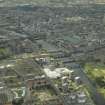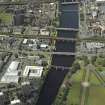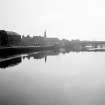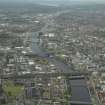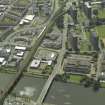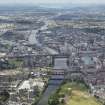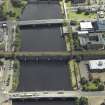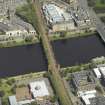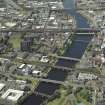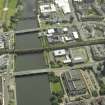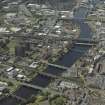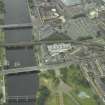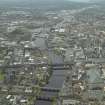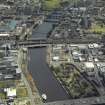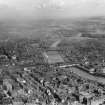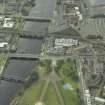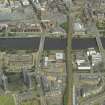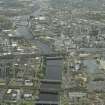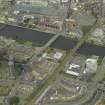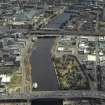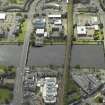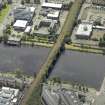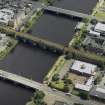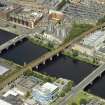Glasgow, Stockwell Street, Victoria Bridge
Road Bridge (19th Century)
Site Name Glasgow, Stockwell Street, Victoria Bridge
Classification Road Bridge (19th Century)
Alternative Name(s) River Clyde; Upper Harbour; Clyde Streeet; Carlton Place
Canmore ID 44283
Site Number NS56SE 24
NGR NS 59173 64579
Datum OSGB36 - NGR
Permalink http://canmore.org.uk/site/44283
- Council Glasgow, City Of
- Parish Glasgow (City Of Glasgow)
- Former Region Strathclyde
- Former District City Of Glasgow
- Former County Lanarkshire
NS56SE 24 59173 64579
For (predecessor) Stockwell Bridge, see NS56SE 458.
(NS 5917 6456) Victoria Bridge (NAT)
on site of Stockwell Bridge (NR)
OS 25" map, (1954)
Architect: James Walker (London) 1851-4.
(Undated) information in NMRS.
The original timber bridge having gone into decay about 1340, Bishop Rae built a stone bridge at Stockwell Street in 1345. The bridge was originally 12' wide, and consisted of eight arches. In 1777 it was widened by 10' and the two northmost arches built up. In 1835, the bridge was 415' long and 34' wide (NSA 1845). It was replaced by Victoria Bridge, built about 1855 (ONB 1858).
NSA 1845; Name Book 1858.
Victoria Bridge: a modern bridge with no visible signs of antiquity.
Visited by OS (F D C) 19 September 1951.
Victoria Bridge, built 1851-4. James Walker, engineer (£46,206). The contractor was William Scott of Glasgow. A five-arched sandstone bridge encased in Kingstown (Dublin) granite. The centre span is 80ft [24.4m], the adjacent arches 76ft [23.2m], and the outer spans 60ft [18.3m]. The roadway is 58ft [17.7m] wide. SDD category B.
J R Hume 1974.
Victoria Bridge, 1851-4. Engineer James Walker of London; contractor Wm York of Glasgow. Of sandstone faced with granite from Kingstown (now Dun Laoghaire) near Dublin, which is darker than the Dalbeattie granite used for other bridges down river. It is a generation older than those bridges - and more restrained in its design of five segmental arches (span of the largest: 80ft/24m) under a parapet which makes a continuous low curve in elevation. The tails of the voussoirs are cut to form steps matching the courses in the spandrels, the cutwaters curved from the sides of the piers to a sharp point, and topped by a domical shape of solid granite. The parapet balusters are carved to a square shape in plan, an elegant touch.
E Williamson, A Riches and M Higgs 1990.
This bridge carries Stockwell Steet across the River Clyde at the SE (upstream) end of the Upper Harbour, and thus forms the upper limit of navigation by ships. The river here forms the boundary between the parishes of Glasgow (to the N) and Govan (to the S).
The location assigned to this record defines the centre of the span. The available map evidence indicates that the bridge extends from NS c. 59203 64630 to NS c. 59140 64520.
Information from RCAHMS (RJCM), 15 December 2005.
Construction (1851 - 1853)
Project (2007)
This project was undertaken to input site information listed in 'Civil engineering heritage: Scotland - Lowlands and Borders' by R Paxton and J Shipway, 2007.
Publication Account (2007)
This bridge, between Stockwell Street and Gorbals Street, is now the oldest road bridge crossing the river. It has five low-rise segmental arches on a skew of 618 varying in span from 67 ft to 80 ft at the centre, where the rise is only 10 ft 6 in. It is constructed in light-coloured local sandstone and faced with granite from Kingston, near Dublin, and is one of the finest examples of its type in Scotland.
The foundation stone was laid on 9 April 1851 by the Duke of Atholl and the bridge was opened on 1 January 1854. The engineer was James Walker and the contractor, William Scott. The cost was about £46 000.
R Paxton and J Shipway 2007
Reproduced from 'Civil Engineering heritage: Scotland - Lowlands and Borders' with kind permission of Thomas Telford Publishers.



















































